Apart from meat and eggs, birds for the homestead help control pests, pollinate garden plants, and disperse seeds.
Besides, they can enrich the soil for gardening, offer company to other flocks, and provide ornamental value, making your homestead a bird paradise.
When we talk about growing homesteads, chickens are the first birds that come to mind, but there are several other better options.
1. Chickens
No matter what, chickens are the must-have birds in any homestead.
They are great for laying eggs, producing meat, and pest control, depending on the breed. If you want to have a meat breed, you can consider Cornish Cross, Freedom Rangers, Jersey Giant, and New Hampshire Red.
They can be ready to harvest within a minimum of 45 days.
Also, Leghorn, Rhode Island Red, and Plymouth Rock are good egg layers. They can lay eggs within 16 weeks and with a frequency of 24 – 26 hours.
You can quickly hatch the eggs and increase the flock number for profit.
Besides, Barred Rock, Orpington, and Black Star are suitable for both purposes. Also, many chickens can be good foragers and good mothers.
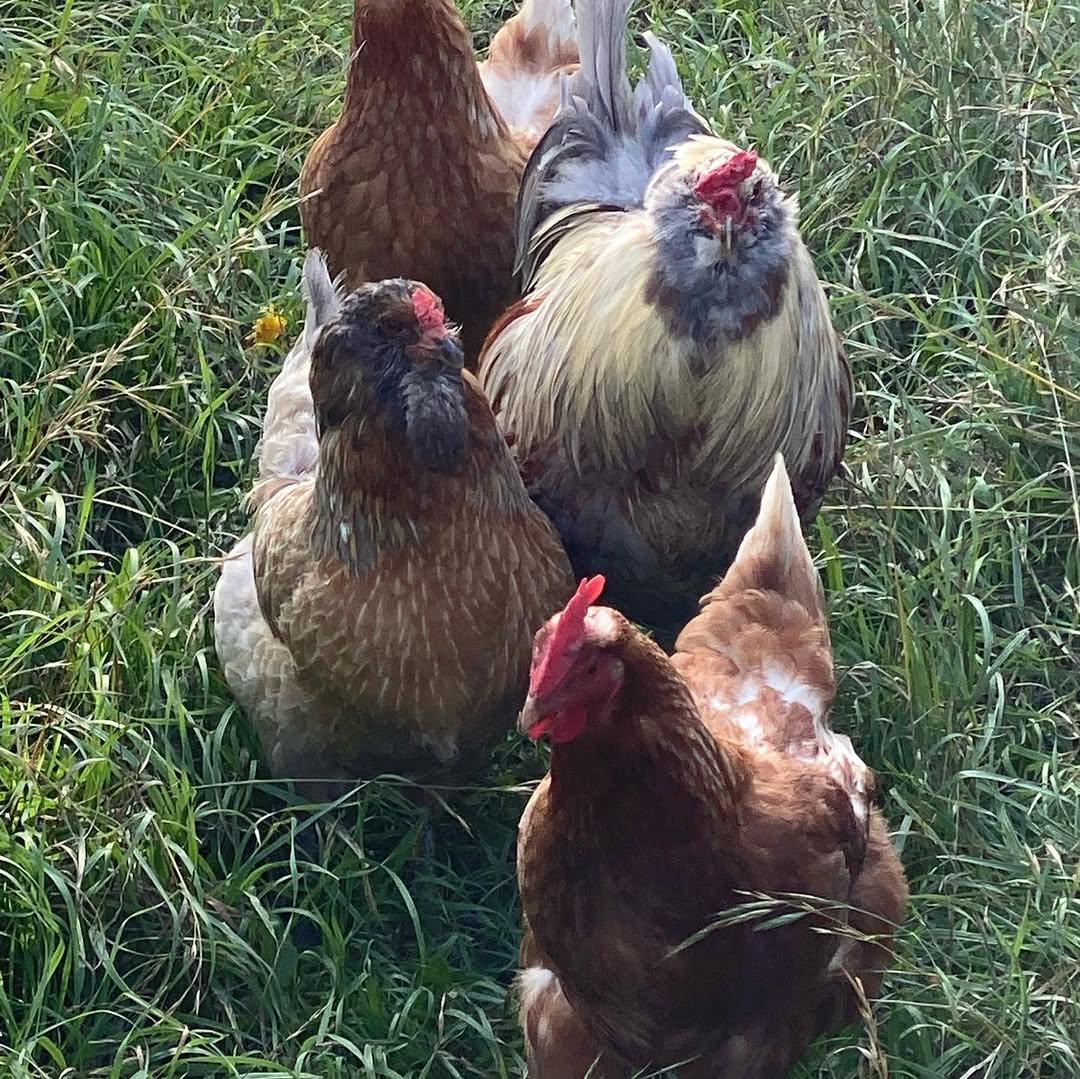
However, chicken roosters can be an early alarm that can disturb your sleep, which may not be preferable in some communities.
Also, some breeds are vulnerable to diseases and predators, such as foxes and hawks, so you need to build a safe coop and provide proper care.
2. Ducks
Unlike chickens, ducks are hardy and can thrive in humid and rainy or wet environments, making them good livestock for the Northeast, South, and Pacific Northwest.
What I like about them is their egg size. They lay larger and more eggs than chickens.
For this, you can choose Khaki Campbell, Indian Runner, and White Crested, which can lay 200 to 300 eggs per year.
Besides eggs, you can tend ducks for meat, slug, and bug control.
So, some popular duck breeds are Pekin duck, Moulard Duck, and Muscovy duck, which can offer tasty, earthy, gamey, and vitamin-rich meat.
If you have little space, you can raise bantam ducks, which make excellent pets and layers.
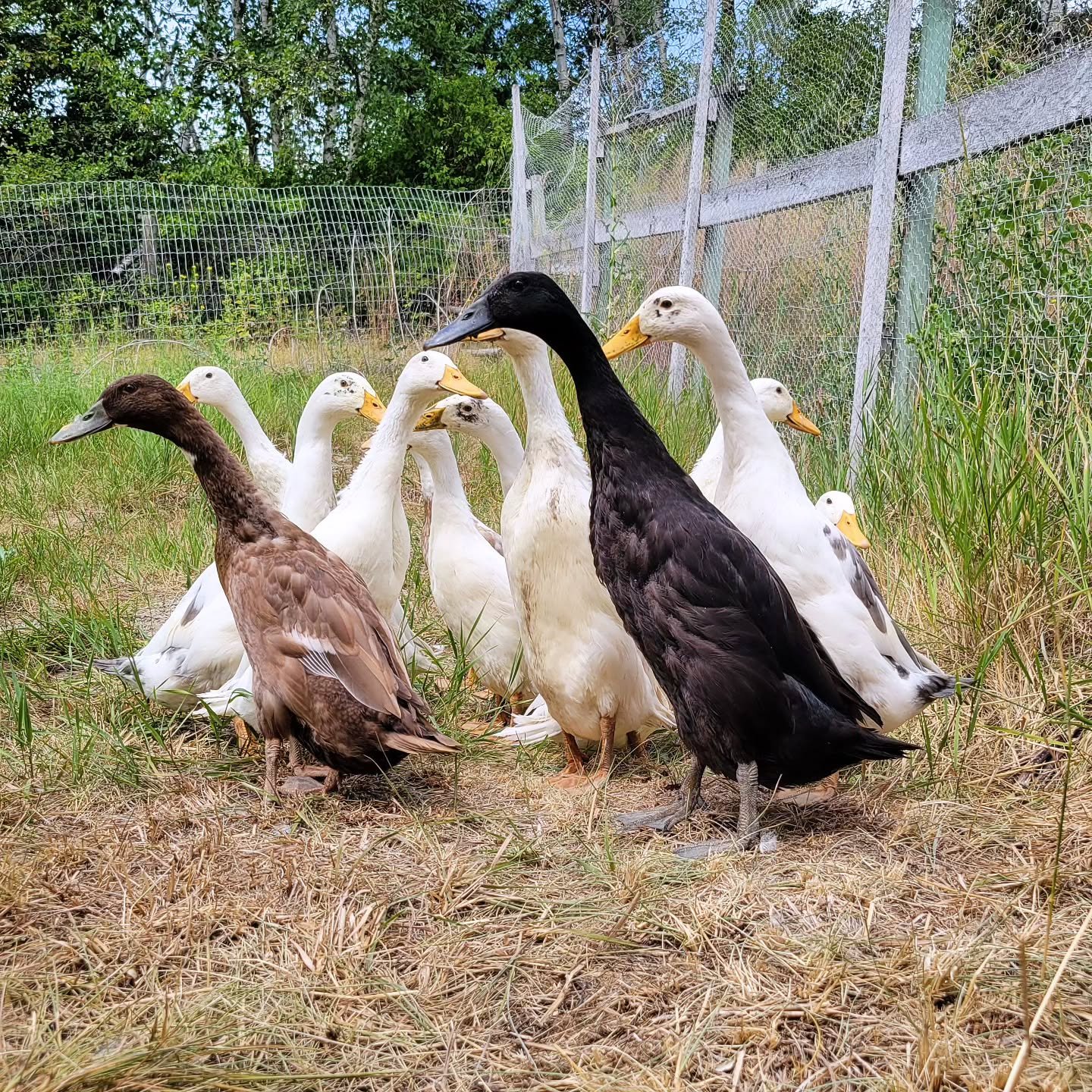
They are excellent foragers that can hunt and eat mosquitoes, ants, spiders, and grasshoppers.
As ducks don’t roost or nest off the ground, you need to provide enough floor space and a ground-nesting place.
Also, build a small pond near their coop.
3. Geese
My friend, Peter, has a pair of geese, which drive many who visit him for the first visit, and I have become a victim a couple of times. 😂
Geege are excellent natural watchdogs that can protect your properties and manage companion flocks.
Other than guarding, they are suitable for weed control, meat, and eggs.
Like ducks, geese pasture well on young grasses such as Bermuda grass, sedge, nut grass, Johnson grass, and clover.
They make low-maintenance grazers and natural lawnmowers. But remember, they can be noisy and aggressive, which may not be the best choice for many homesteaders.
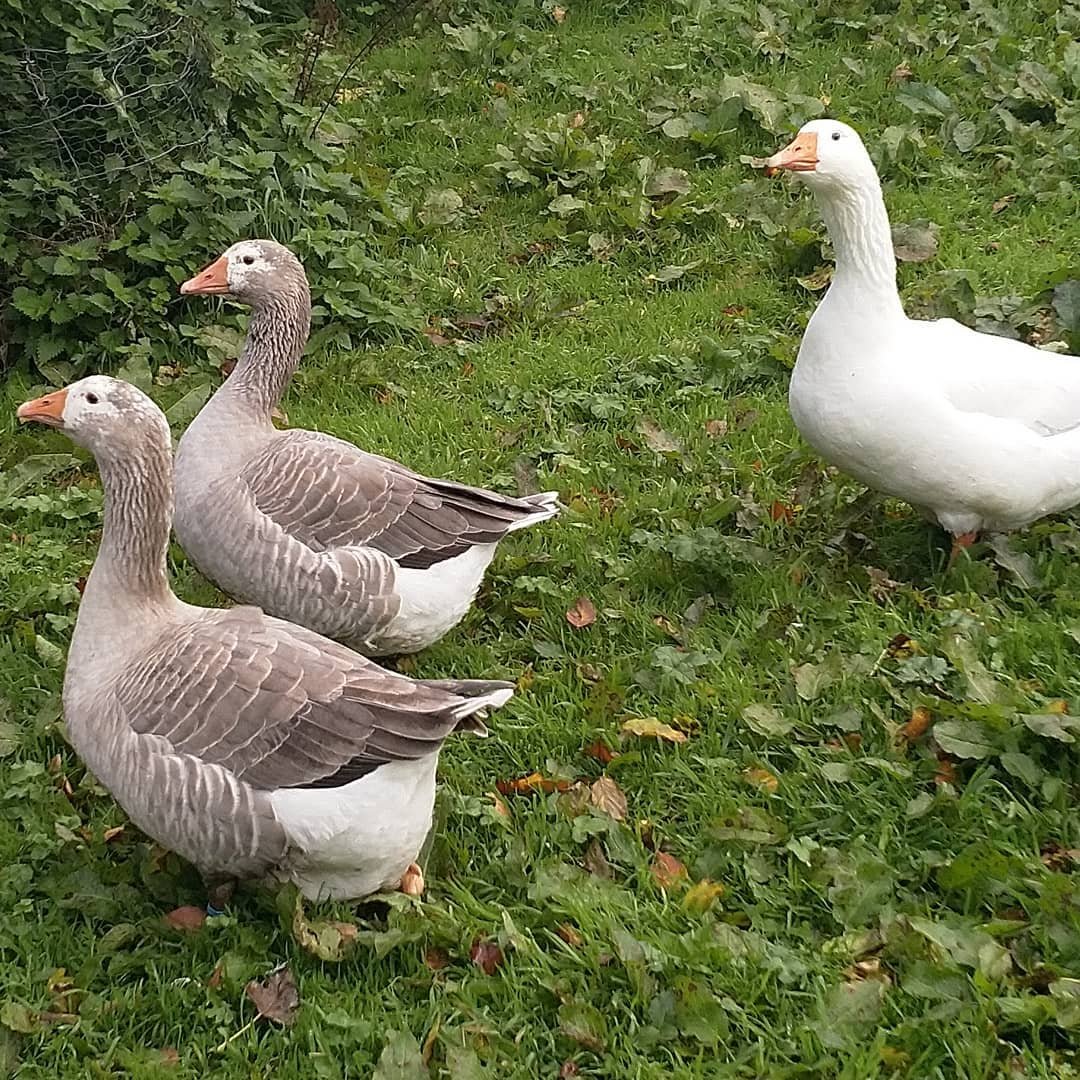
The best and most popular breeds of geese are the Embden, Toulouse, Pilgrim, Chinese, African, and Buff Goose.
4. Turkeys
Apart from celebrating Thanksgiving with the turkey on the table, turkeys can help you make a profit from meat and eggs.
Though turkeys cannot lay as many eggs as chickens and ducks, you can expect 80-100 per year throughout the summer.
They can also feed on stink bugs, spiders, and ticks, making them natural pest controllers.
Also, turkeys are hardy and can withstand winter, helping homesteaders raise them. You can make them pets as they are social and loyal, and enjoy the company of other animals and humans.
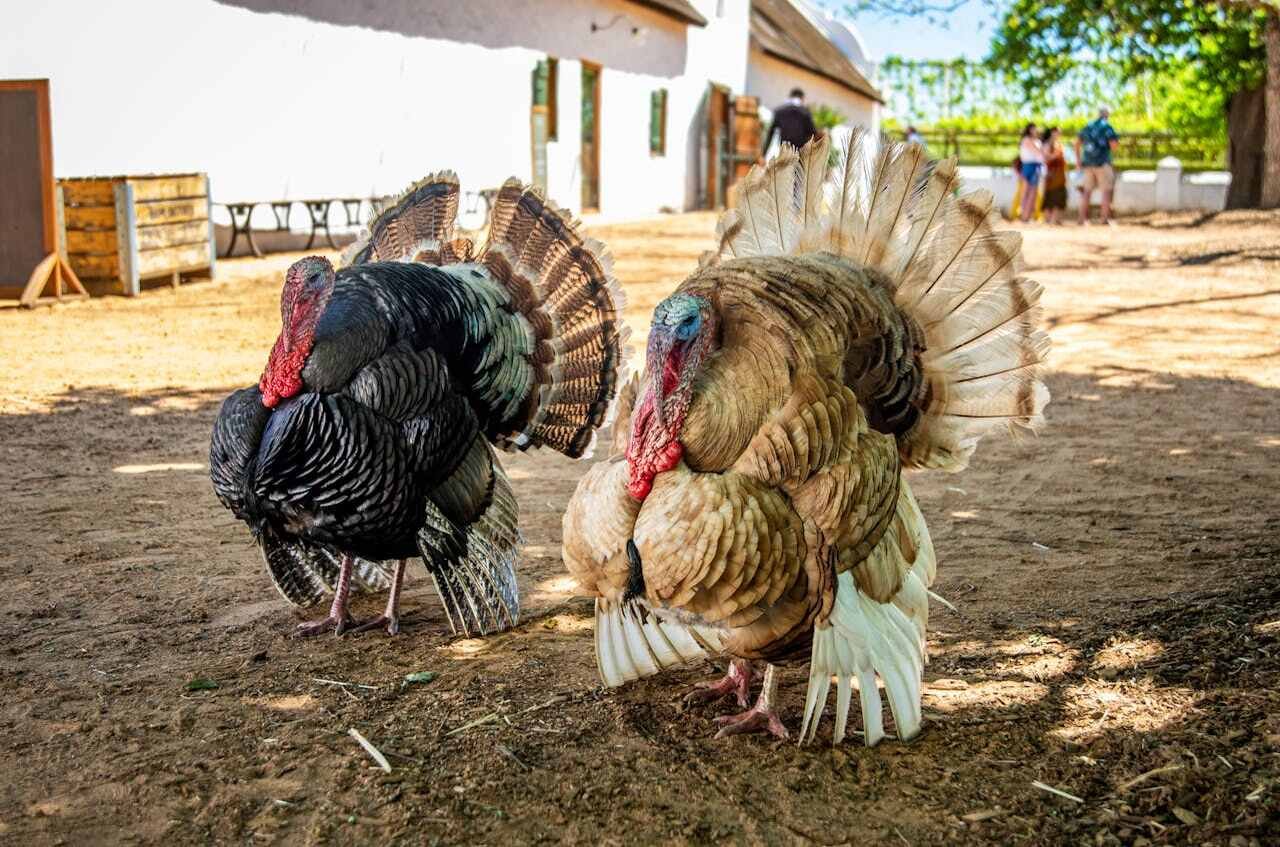
As turkeys are larger than chickens and ducks, they need a large space.
Some popular turkey breeds include Broad Breasted White, Bourbon Red, Narragansett, Black, Brown, and Royal Palm.
5. Guinea Fowls
You may have noticed some singing guinea fowls, while others hate them after their first season of raising.
It depends on their preferences. While they are low-maintenance birds, they can be noisy whenever they feel threatened.
Though it may be less pleasant for humans around them, it can be an early alarm for other flocks against harm or predators.
Guinea fowls are excellent for tick control and eat mites, lice, insects, and snakes.

So, they barely need to feed during the summer months if you provide them with enough space to pasture. Also, they don’t crawl the garden like chickens and make watchdogs like geese.
Besides, they can produce lean and tender dark meat with a similar taste to pheasant, without the strong gamey flavor.
You can prefer popular guinea fowl breeds such as Black, Crested, Helmeted, Plumed, and Vulturine.
6. Quails
Many raise these tiny-looking birds for game farming and hunting dog training at the homestead.
But you can tend quails for meat and eggs. Though they produce small eggs, they are prolific layers, with each egg every day.
However, 5 quail eggs equal one chicken egg, so you need to wait for a couple of days for a single bird to make an omelet. 😃
Due to their fast growth, they can mature in 6 weeks and become ready to butcher within 6-12 weeks, depending on your preference.
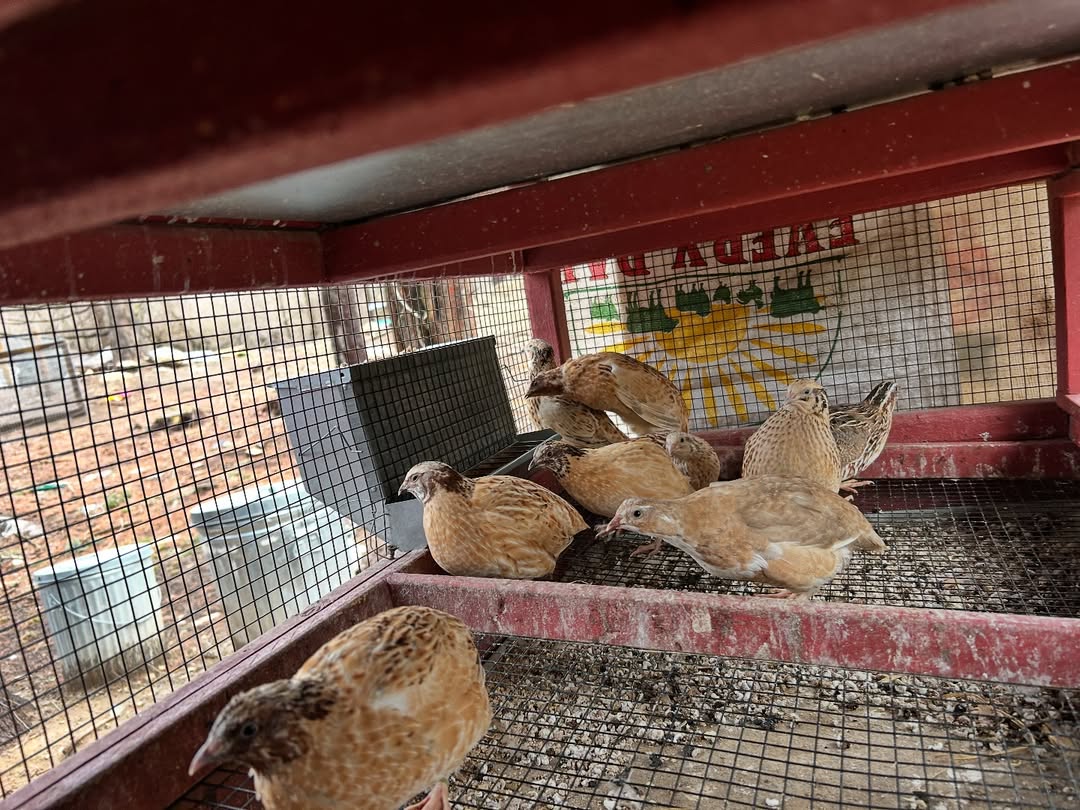
Surprised about their meat purpose? Quail can replace bantam chickens for their dark meat, with a taste mix of chicken and duck. Although small, a quail can offer one serving to a single person.
These small-sized birds do not take up a bigger space at the homestead. You can raise them in the rabbits’ hutch.
You can start raising the popular quail breeds such as Coturnix, Bobwhite, California, Gambel’s, and Button.
7. Pigeons
When I was a child, there wasn’t a day I didn’t play with white pigeons in the front yard.
You can also pet them for leisure time. Only make sure to raise them in confined spaces or trim their feathers so they cannot escape your homestead.
You can even rear pigeons in the colony as they are urban-friendly.
These homing birds are low-cost maintenance birds and can grow in a small cage. Only you need to feed them with mixtures of peas, corn, wheat, milo, and safflower.
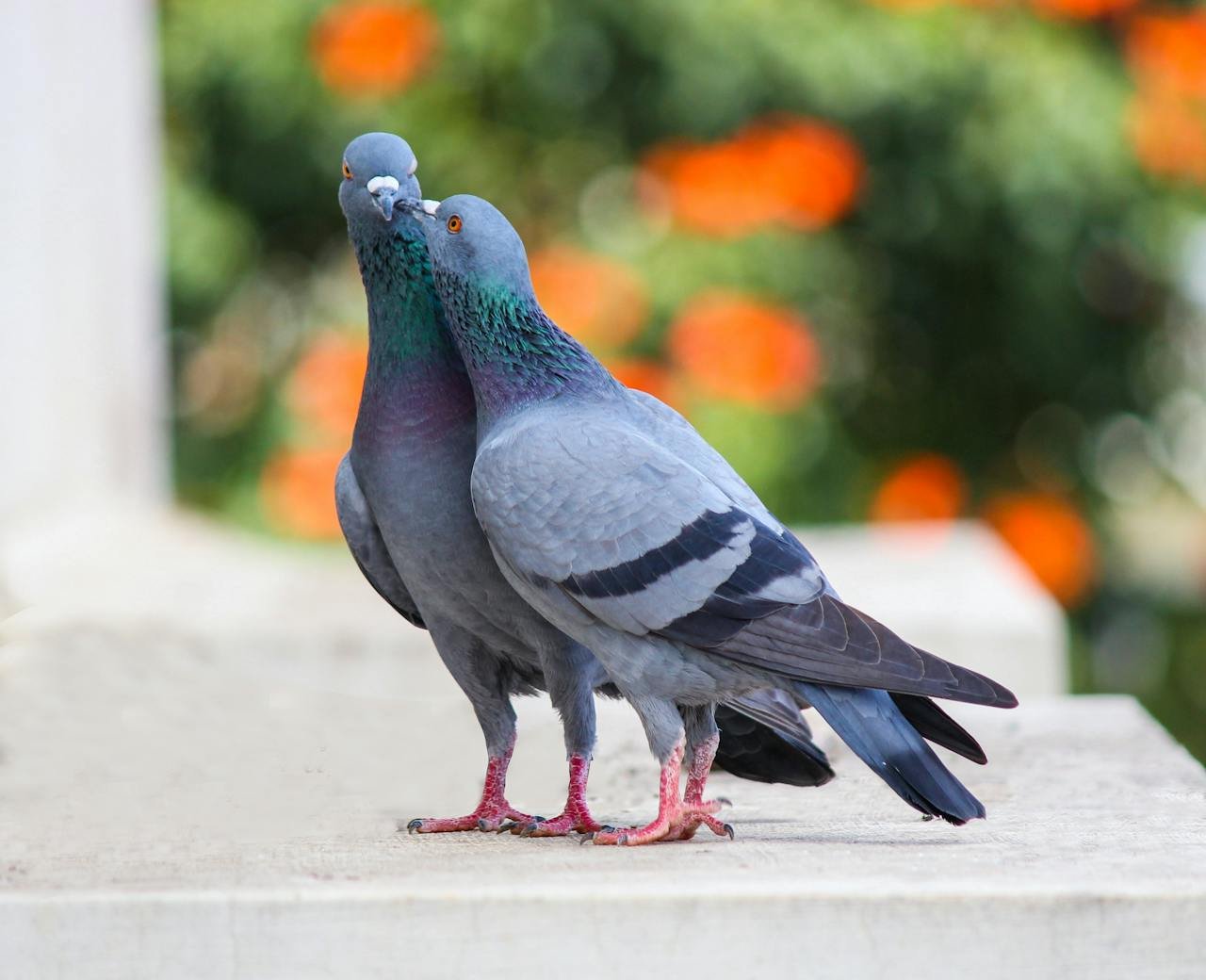
You can outnumber them easily with the correct breeding technique.
Pigeons’ meat is dark, with a quite mild flavor, and some may find it a combination of duck and steak. They mature within 4-6 months.
Some popular pigeon breeds are Runt, Red, French, English Long-faced Tumbler, and Saxon Spot.
8. Emus
These giant crane look-alikes can be counterparts of the ostrich. If you have little space for ostriches, you can raise emus with minimum care requirements.
They need a relatively simple shelter with basic sheds or three-sided shelters and barns.
You can rear them for meat, eggs, oil, feathers, and hides. They produce 20-30 pounds of meat from each bird. Many feel that their dark red color, look, and taste are similar to beef when cooked.
Also, they lay deep green eggs with bluish specks, 30-50 per season.
Their foods include small mammals like lizards, snakes, insects, seeds, flowers, fruits, and young roots.
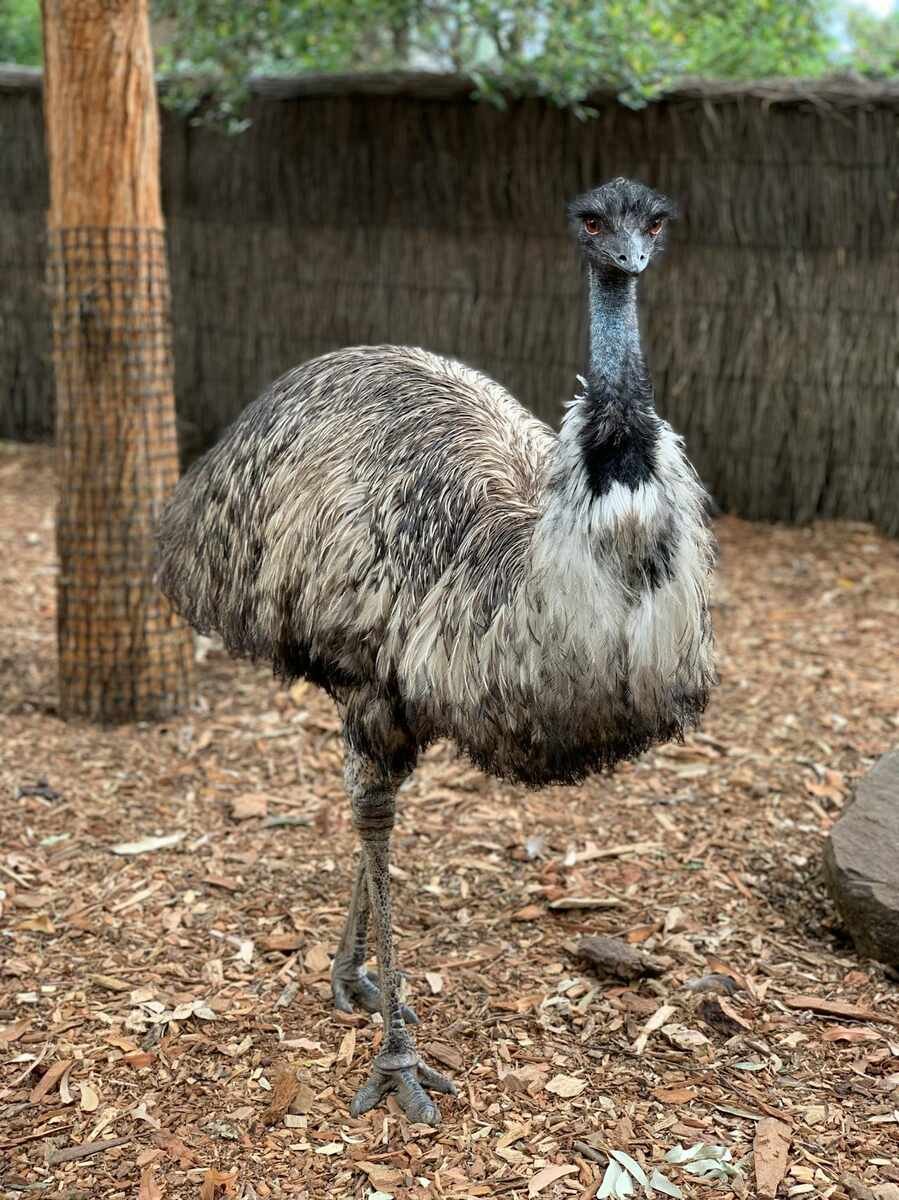
Emus are friendly birds that enjoy the company of other flocks at the homestead. This helps save other companion birds from predators.
However, they need to be vulnerable to eagles and hawks when young. Also, they can be aggressive if they are herded in a crowded place.
9. Swans
Everyone may have heard some folk stories of swans during their bedtime once in a while in their childhood.
So, swans are raised for decoration rather than for egg harvesting and for commercial purposes.
They like to live in lowland, freshwater wetlands, so raising them helps kids understand the value of wetlands and conservation. Also, they tend to live outdoors.
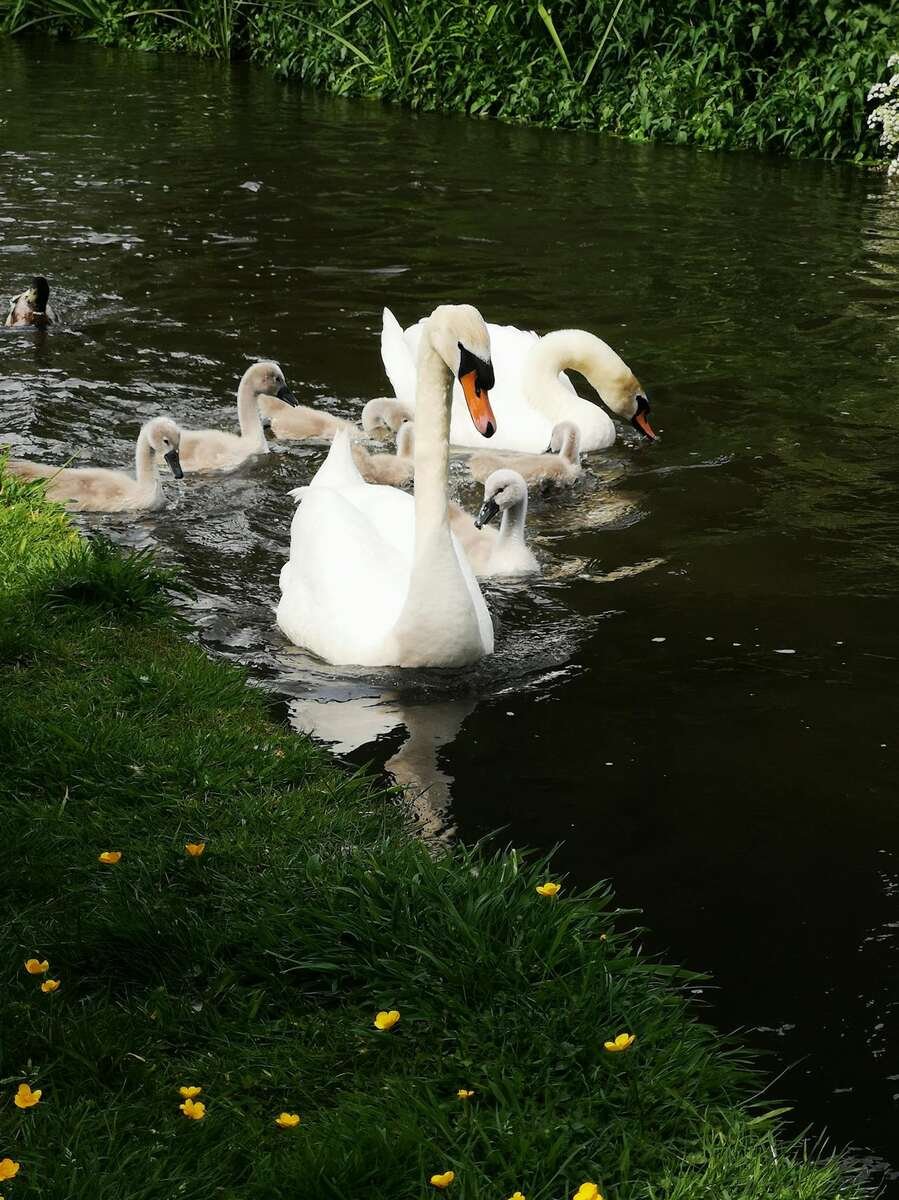
Thus, a quarter-acre pond with at least 18 to 24 inches in depth should be built before keeping swans.
As swans are hardy birds, they can tolerate cold and high temperatures, making them low-maintenance birds.
10. Peafowl
If you have a large piece of land, you can consider raising Peafowl, which can add aesthetic value to your homestead.
The striking, colorful feathers can make the surroundings photogenic. After they finish shedding their feathers, you can use them for crafts or sell them in the market.
Peafowls are very aloof so that owners can feed them with their hands.
You can allow them to free range for half a day and then herd them back into their enclosure.
They can eat fruit, berries, grains, small mammals, reptiles, small snakes, and insects. So, they can make a natural pest controller.
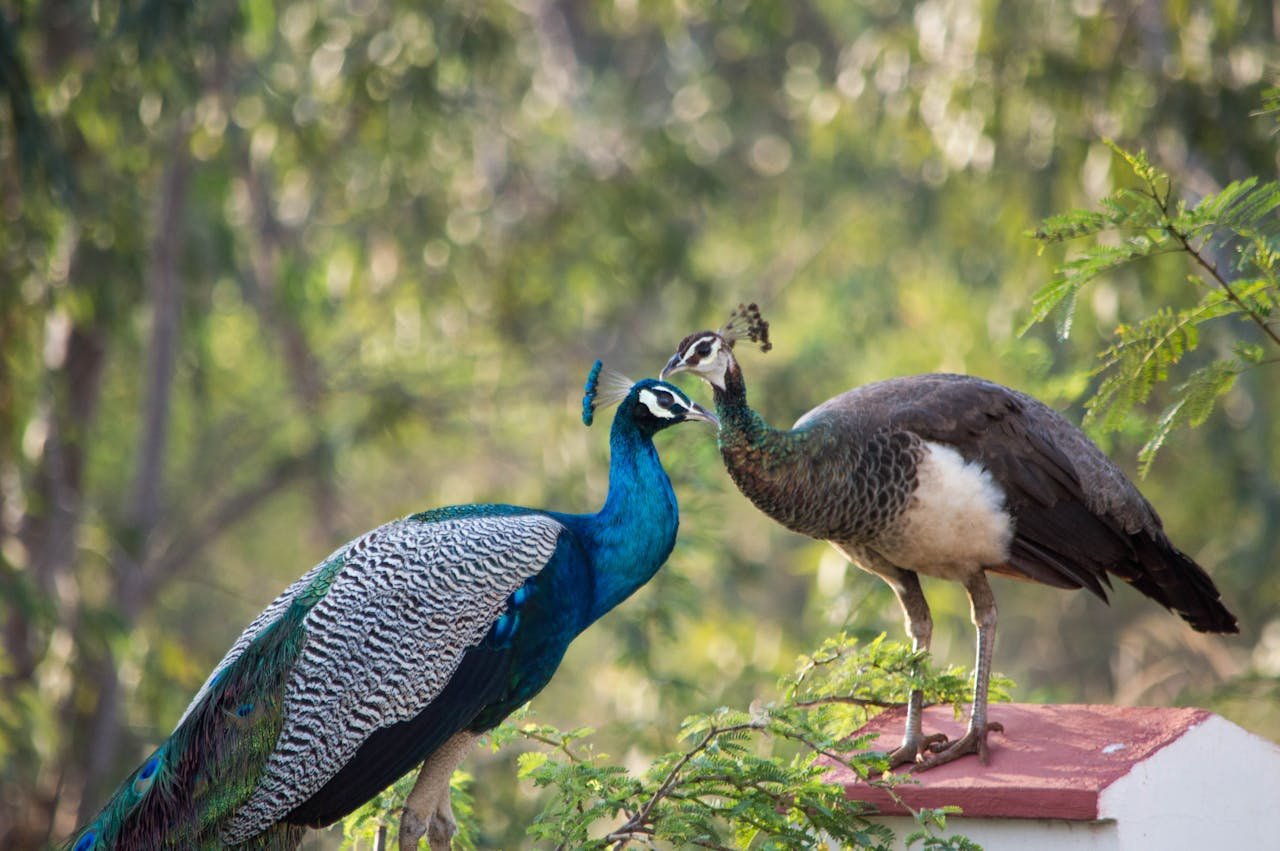
Peafowls contain double breast meat with an earthy and robust flavor, much like turkeys or pheasants, but can be richer.
They mature within 2-3 years and can live up to 12-15 years.
You can get Indian Blue, Javanese, and Congo peafowl for your homestead.
11. Grouse
Unlike other domestic birds, grouses are raised in semi-wild environments. They prefer winter-like settings, such as dense hardwood saplings and young oaks that retain leaves.
They cannot survive in the coop or enclosure. Many find it hard to raise the grouses at home with a high survival rate.
When raised successfully, grouses can offer an intricate pattern with shady bars and spots. So, you can tend them for display.
They live on leaves, buds, fruits of ferns, shrubs, and woody plants. Though they are not prolific layers, you can expect 6-14 eggs per hen.
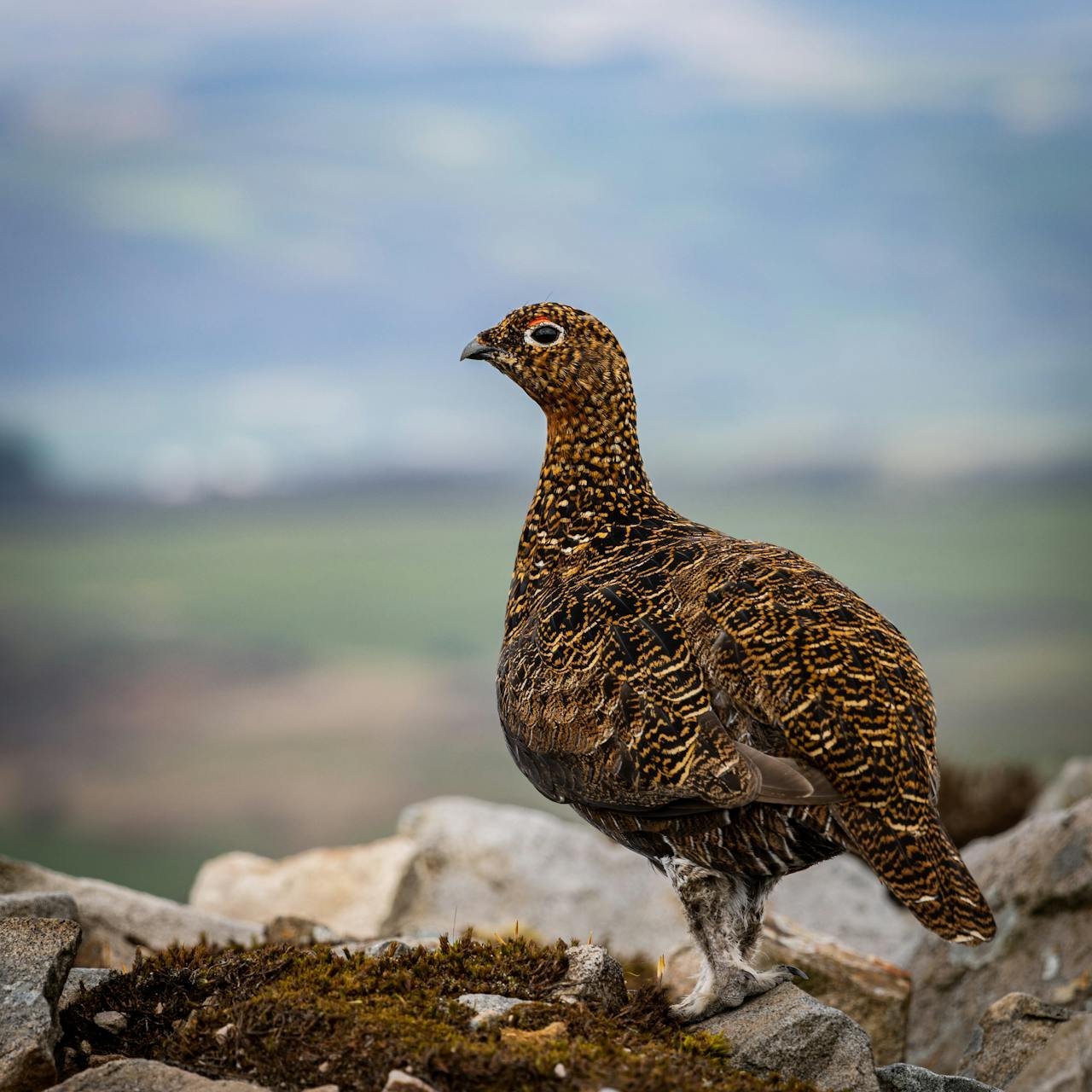
Also, you can harvest dark, reddish meat with a rich, gamey flavor.
Some of the best grouse birds for homestead are Ruffled, Spruce, Dusky, and Sooty.
12. Pheasants
These ornamental birds can be the counterpart of peafowls, offering an exotic look with colorful feathers and long tails.
The good news is that they also survive cold and winter, making them live 3-5 years in the wild and 11-18 years in captivity. Many owners raise them in the wild.
They thrive well in larger areas such as grasslands, wetlands, idle fields, haylands, croplands, and shrublands.
As pheasants are fairly prolific layers, they can make good game birds at the homestead. You can raise pheasants for meat in a pen and closed confinement on a farm.
But they are flighty birds and can be aggressive. However, they can be a little friendlier with humans, the way chickens, ducks, and geese are.
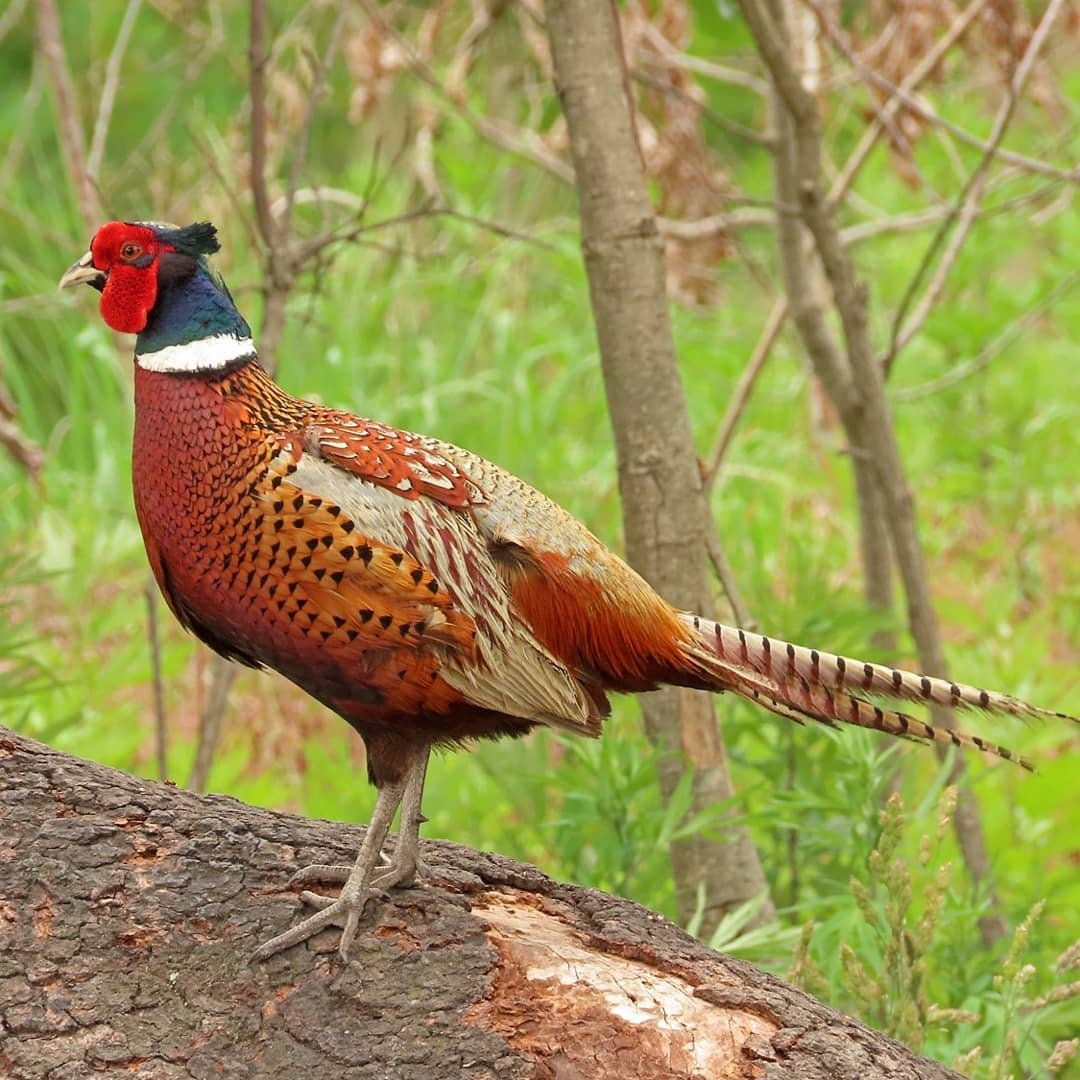
Also, pheasants are poor mothers and grow cannibalistic if they are kept in stressful environments.
Anyway, they produce lean meat with a taste similar to that of chicken or turkey.
Some popular breeds to raise are Ringneck, Kansas Ringneck, Melanistic Mutant, and Manchurian or Ringneck Cross.
13. Doves
Doves are look-alikes or companion birds of pigeons, which can be raised for multiple purposes, including ornamental value.
Also, you can rear doves and pigeons together and make a profit renting or selling them at wedding events.
Doves can make a good house pet as they are curious, friendly, easy to feed and manage, and are more peaceful. Though they grow well in an enclosed outdoor aviary, they can also live in a small cage with small requirements.
They eat grains, seeds, greens, berries, or fruits.
You also need to provide them with clean water, sanitize them and their living space, and pay some attention.
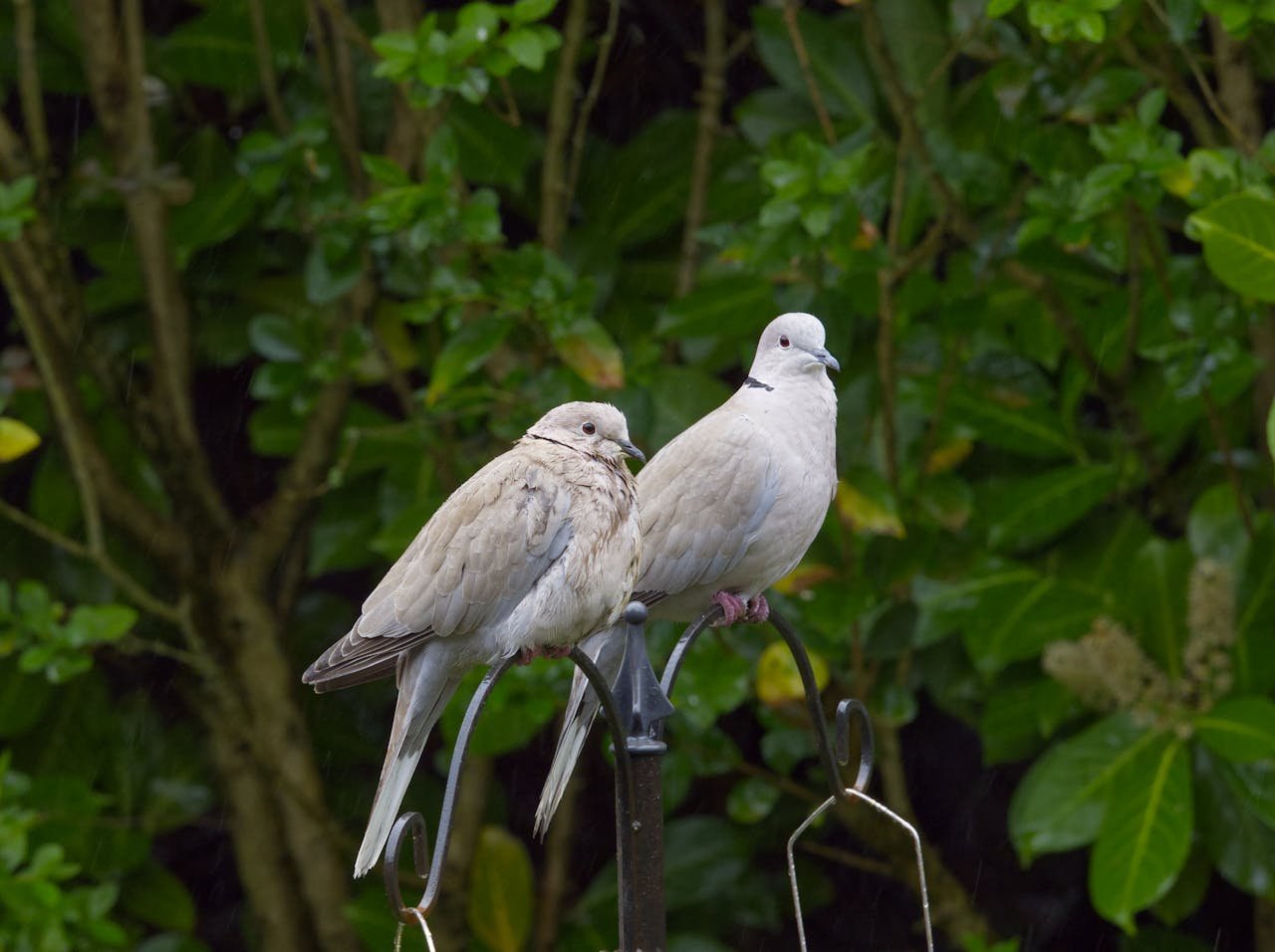
Doves produce dark and lean meat with a mild and gamey taste. Some find them sweet and almost nutty or mild berry and duck like flavor.
Some popular dove breeds for homestead include Ringneck, Morning, Bronzewing, Eurasian Collared, and Golden Spotted.
14. Partridges
Partridges are resilient birds that survive winter and predators, making them low-maintenance birds.
They naturally live in forests, grasslands, and rocky plains and are best suited for hilly terrains.
So you can provide them with an enclosed aviary that includes brush, shrubs, small trees, and grasses for them to hide.
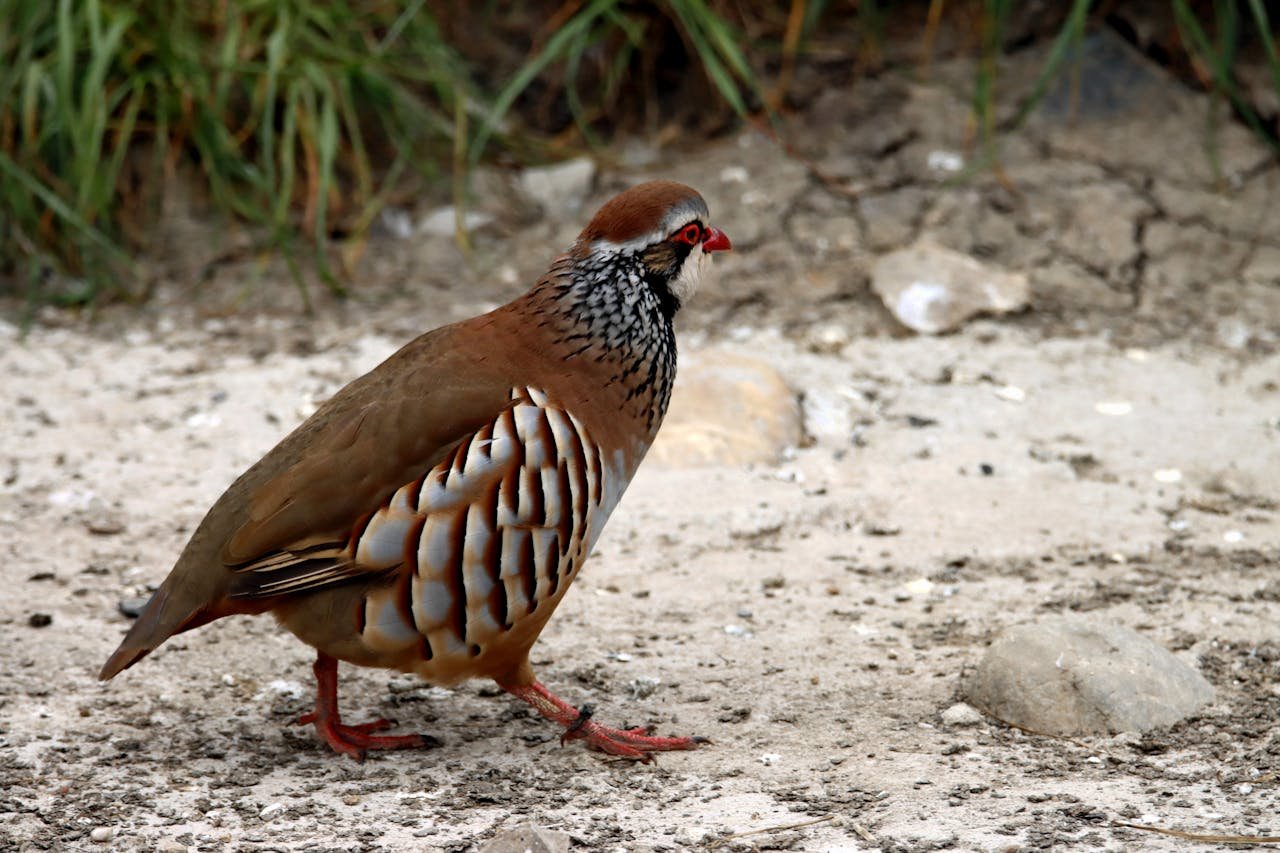
Though partridges are ground-dwelling birds, they can fly away if given an open sky. Also, when they mature, pay attention to them as they grow aggressive and cannibalistic, destroying all the flocks.
They mainly eat vegetation, including seeds and some greens.
Also, these birds can be a natural pest controller at a homestead as they eat grasshoppers, locusts, crickets, and ants.
Once they are mature in 20-24 weeks, you can harvest tender meat with a gamey flavor.
Some considerable raising breeds are Chukar and Hungarian partridges.
15. Ostriches
The giant birds can be as good as the livestock with a better feed conversion ratio and multiple raising purposes.
However, only those who have spacious homesteads prefer raising ostriches. So, you need to tend them in large, well-fenced enclosures.
Though they cannot fly due to their large size, they can run fast.
What fascinates me about ostriches is their large eggs, each equal to five chicken eggs. They can lay 40-130 eggs annually, which makes a good market.
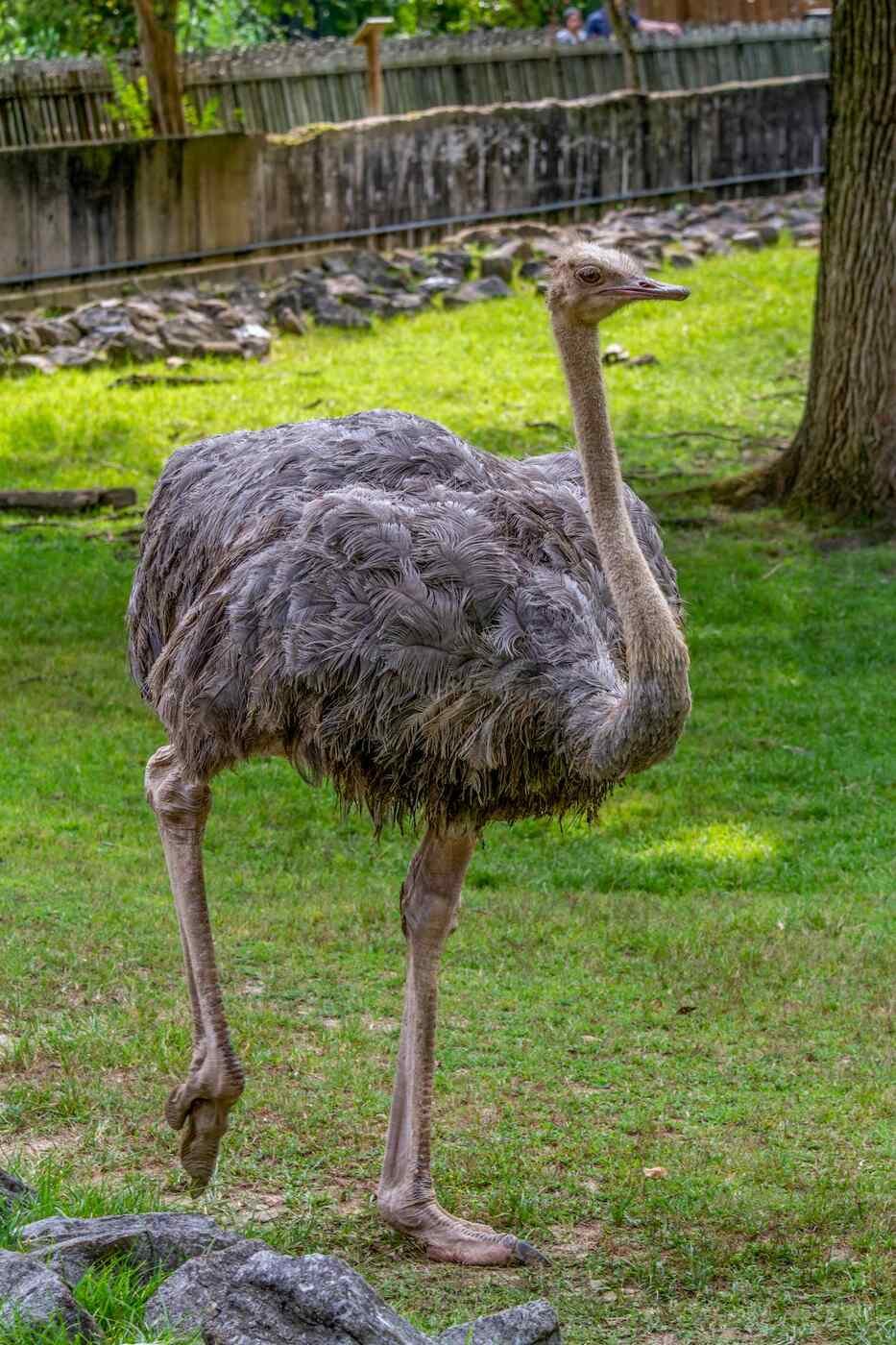
Their empty eggs are also sold for several DIY crafts.
Besides, you can also harvest ostrich feathers and hides for natural dusters, leather, and other purposes. Removing feathers is no harm to birds.
Also, the ostrich can provide a significant meat yield, ranging from 70 to 130 pounds.
Like Emu, ostriches produce lean red meat with prime beef flavor.
Apart from the common ostrich, homesteaders prefer the Masai ostrich and the Somali ostrich to raise.
Final Thoughts
If you still find a list of the best birds for homestead incomplete, please be a guest in the comment section.
While choosing the birds, consider factors such as climate compatibility, maintenance needs, space, and purpose, along with pros and cons.
Also, abide by the state laws regarding bird keeping; for example, several states, including Minnesota and California, issue licenses to keep swans at home, while Kentucky does not permit it at all.



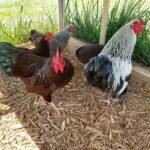
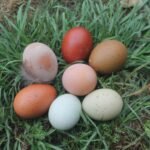

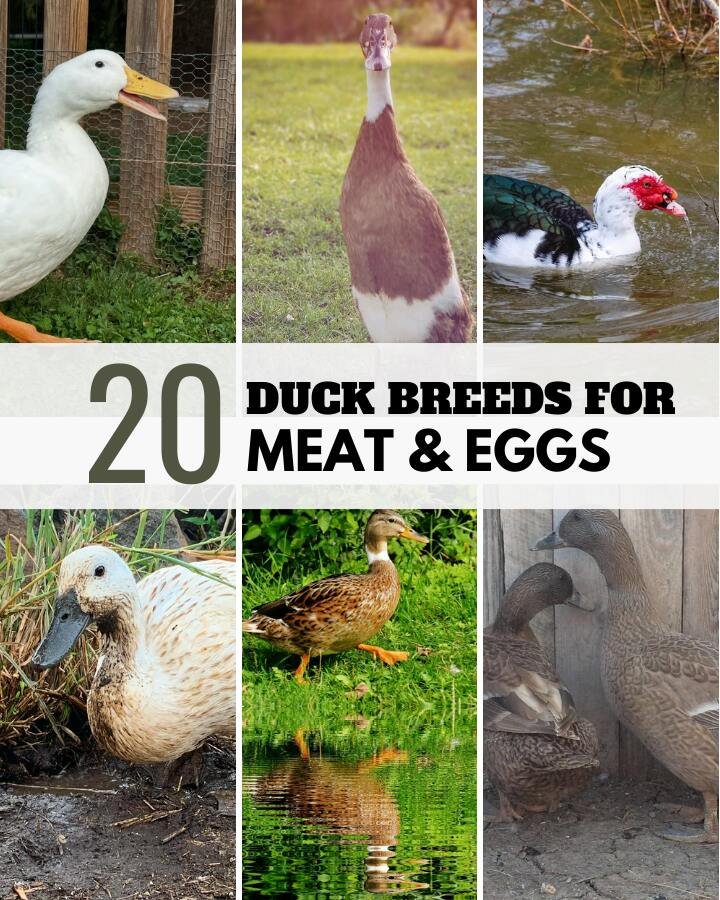



Leave a Reply